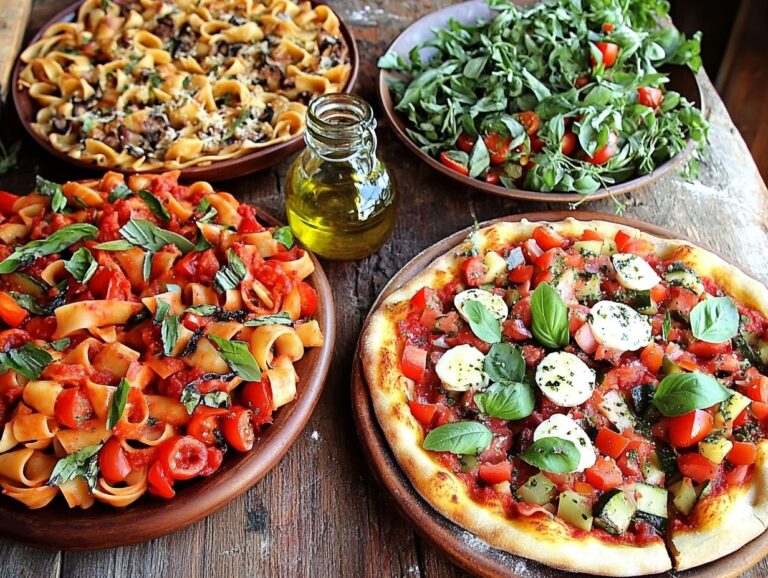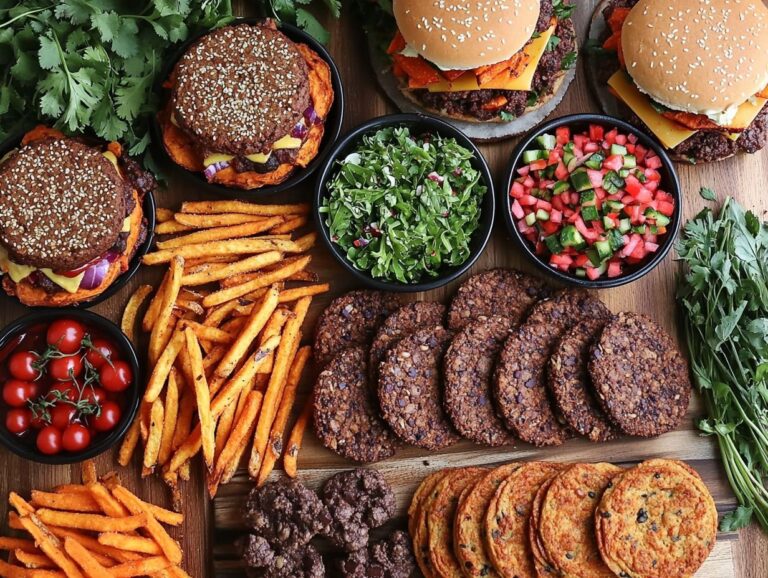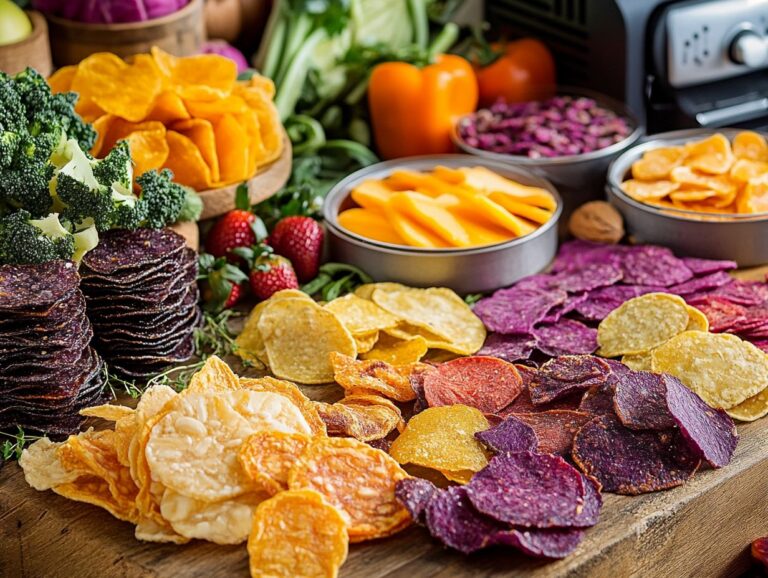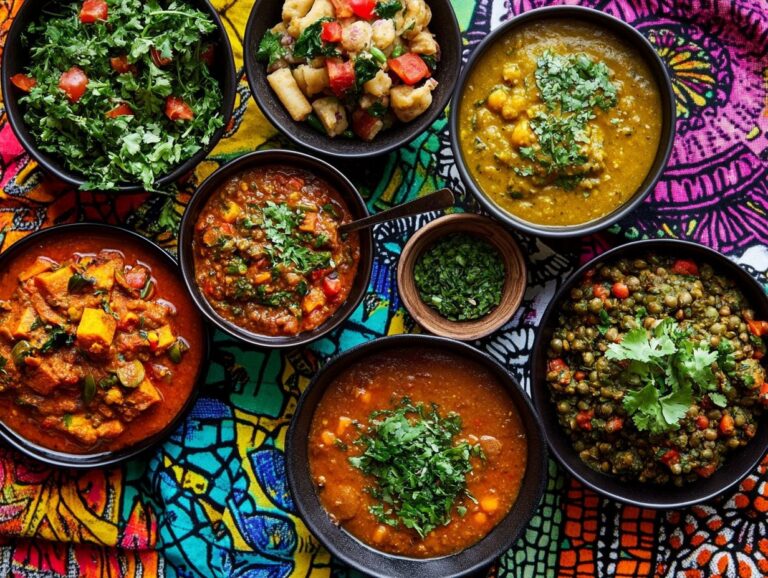Are you curious about lectins, anti-nutrients, and their impact on your digestive health and gut health?
We explore what lectins are, why some people choose to avoid them, and the potential benefits of adopting a lectin-free vegan diet. You’ll discover how this eating style can enhance digestion, optimize nutrient absorption, and promote overall well-being and better health.
Additionally, we share delicious recipe ideas featuring superfoods for breakfast, lunch, dinner, snacks, and desserts, along with practical tips for incorporating these meals into your daily routine through meal prep and recipe customization.
Join us on this journey to better health!
What are Lectins and Why Avoid Them?
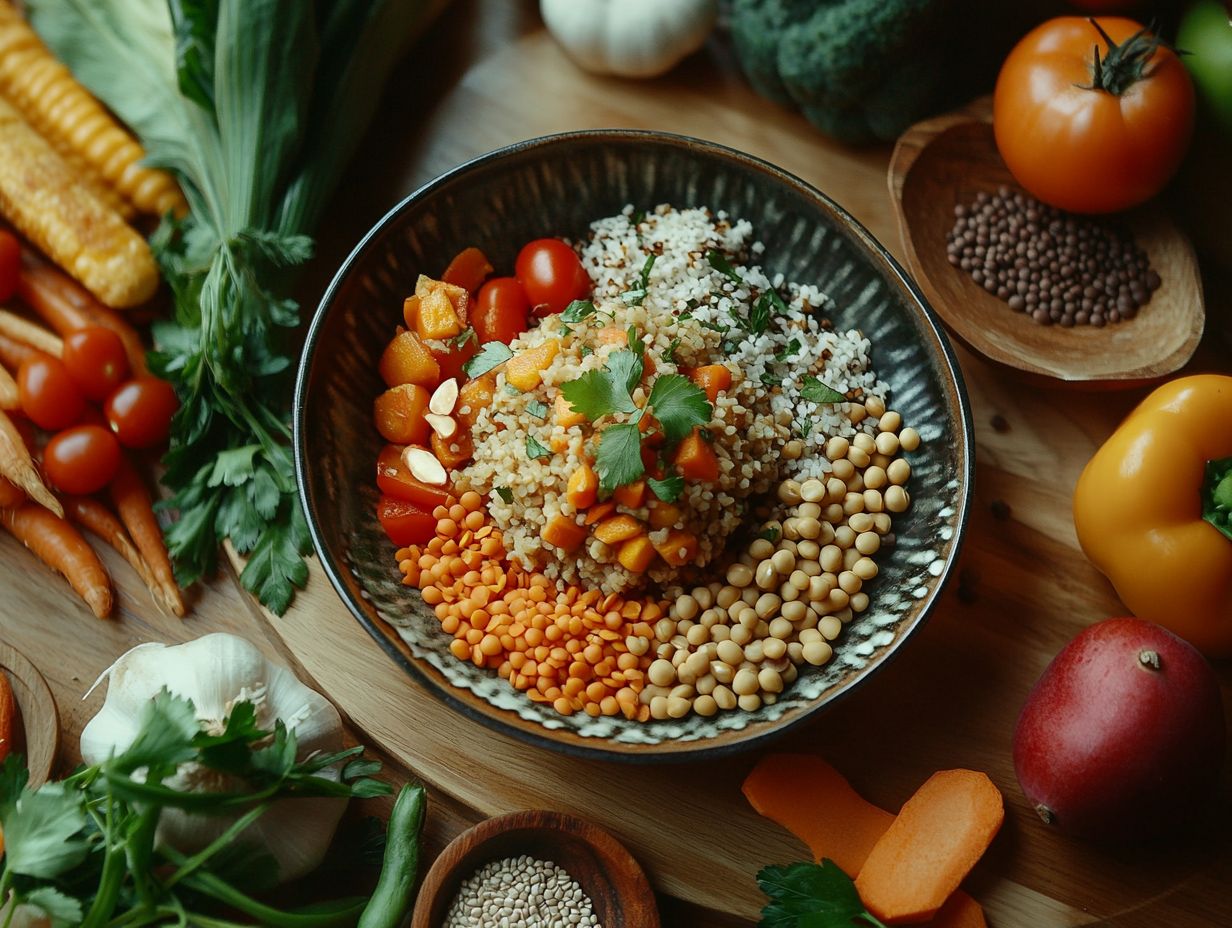
Lectins are proteins present in a variety of plant-based foods, including legumes, grains, and certain vegetables. While they serve to help plants defend against pests, they can negatively impact human health, particularly in individuals with food sensitivity or specific digestive health conditions.
Consuming foods that are high in lectins can lead to inflammation, digestive problems, and other adverse health effects. As a result, many people are choosing to adopt a lectin-free diet in an effort to enhance their health.
Understanding Lectins and their Effects on Health
Understanding lectins and their health-related effects is crucial due to their potential negative impact on digestive health and overall wellness, including gut health and the ability to make health-conscious choices.
Lectins can bind to carbohydrates in the gastrointestinal tract, potentially leading to digestive issues, inflammation, and interference with nutrient absorption and the microbiome.
For individuals with food allergies or sensitivities, avoiding foods high in lectins may be essential for achieving better health, particularly through a conscientious plant-based diet that integrates anti-inflammatory foods.
Studies indicate that certain legumes, grains, and nightshade vegetables are rich in these proteins, making them potential sources of discomfort for those with sensitive digestive systems.
For example, kidney beans and lentils are nutritious foods that contain high levels of lectins, which can hinder the absorption of essential vitamins and minerals if not prepared properly, impacting heart health and immune system functionality.
Additionally, lectins can have systemic inflammatory effects, which may exacerbate allergy symptoms in individuals with pre-existing conditions.
Therefore, understanding the nature of lectins may give the power to individuals to make more informed dietary choices that align with their health objectives, especially within the context of a plant-based diet.
The Benefits of a Lectin-Free Vegan Diet
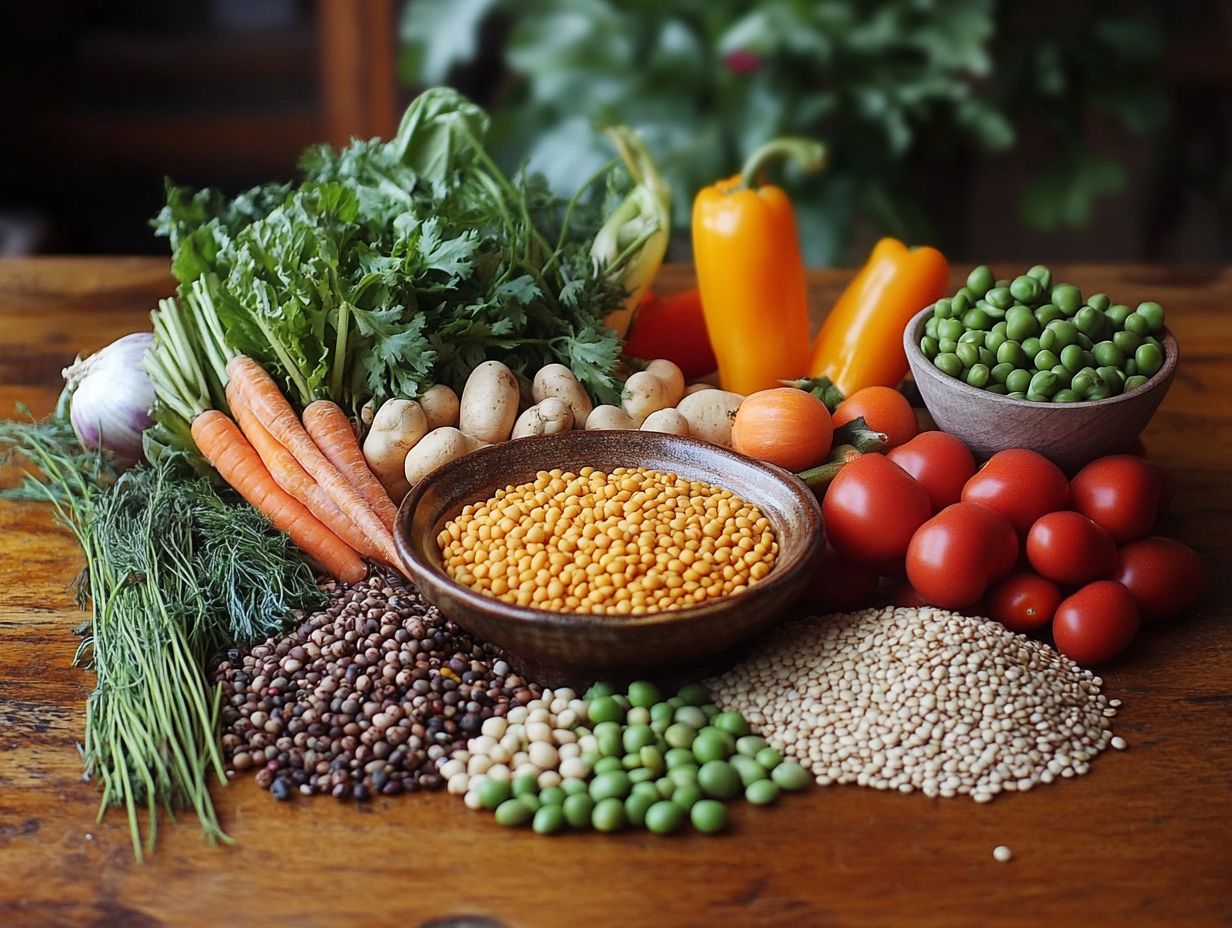
A lectin-free vegan diet offers numerous benefits for individuals looking to reduce lectins in their meals while promoting overall wellness and health benefits. Lectins are proteins found in various foods, particularly in legumes and grains, and can cause adverse effects for those who are sensitive to them.
By eliminating or reducing lectins from their diet, individuals may experience improved digestion, increased energy levels, and enhanced overall health, supporting weight management and diabetes-friendly eating.
Specifically, adopting a lectin-free vegan diet that emphasizes whole foods, fruits, vegetables, legumes, grains, nuts, and seeds ensures a nutrient-dense intake of vitamins, minerals, and healthy fats essential for maintaining a balanced diet and supporting immune health.
Improved Digestion and Overall Health
One of the key benefits of a lectin-free vegan diet is improved digestion, which contributes to better gut health and reduced inflammation. By focusing on lectin-free foods that are high in fiber, such as vegetables, fruits, and legumes, individuals can enhance their digestive system and support their overall gut microbiome.
Additionally, incorporating healthy fats from sources like nuts, seeds, and avocados can further promote digestion and overall well-being, contributing to cholesterol management and heart health.
Plus these fiber-rich foods, whole grains such as quinoa and brown rice are also crucial as they provide essential nutrients while aiding the digestive process. Similarly, foods rich in probiotics, such as fermented vegetables, can enhance gut health by supporting the microbiome and reducing inflammation in other parts of the body.
This balanced approach not only offers immediate benefits for digestion but also provides long-term advantages by creating a more resilient gut environment, which helps minimize the risk of chronic diseases and supports overall functionality.
Lectin-Free Vegan Recipe Ideas
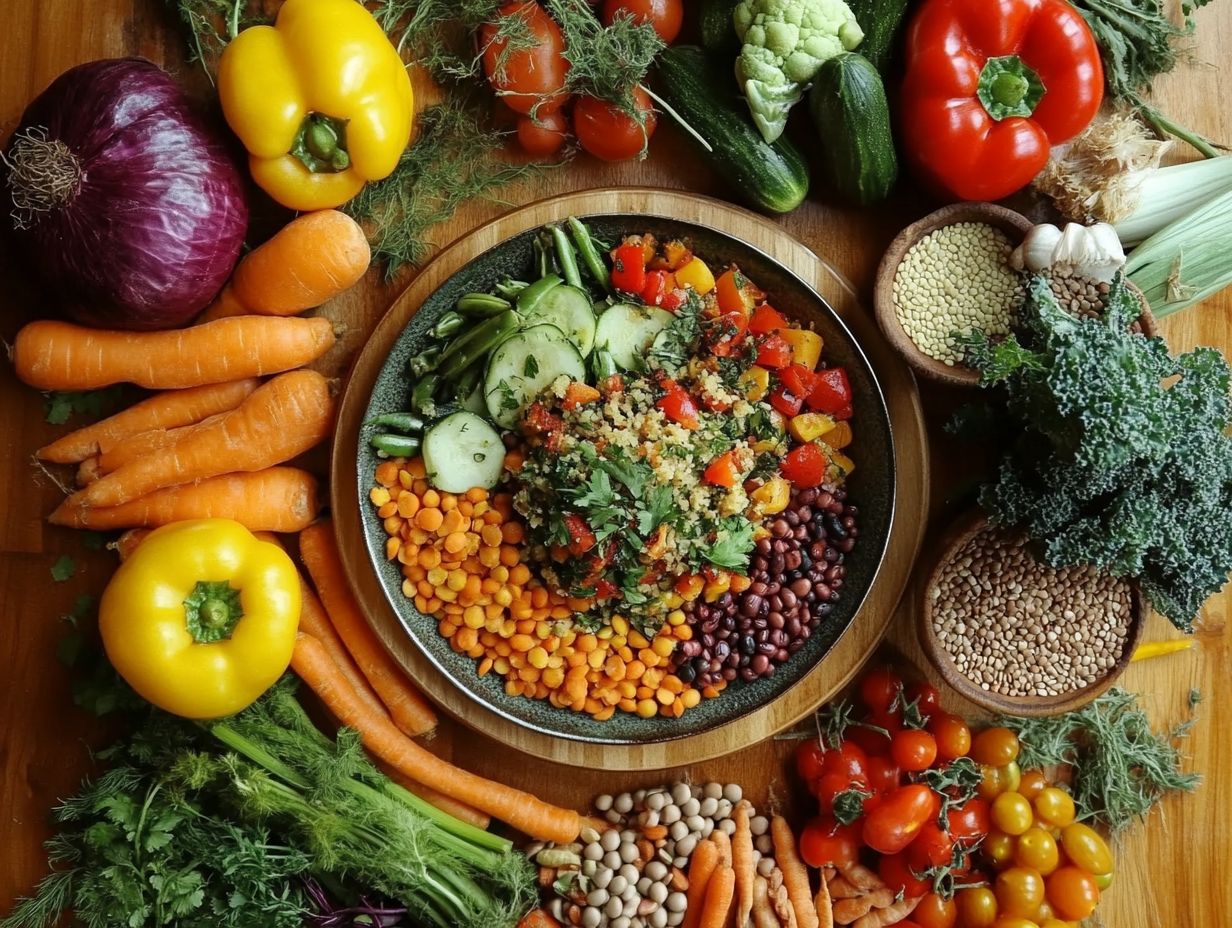
Lectin-free vegan recipe ideas enable individuals to create meals that are both healthy and delicious while catering to their dietary preferences, embracing culinary creativity and sustainable living.
These recipes utilize a diverse array of whole foods, including seasonal fruits and vegetables, nuts, seeds, healthy fats, and plant proteins.
Easily integrated into meal prepping and planning, lectin-free vegan recipes can range from nutritious and hearty breakfasts to satisfying lunches and dinners, as well as wholesome snacks and desserts.
Breakfast Recipes
Starting the day with delicious lectin-free breakfast recipes establishes a positive tone for clean eating and the consumption of whole foods. Options such as chia seed pudding, smoothies packed with leafy greens, or avocado toast on gluten-free bread provide a nutrient-dense way to energize your morning while avoiding lectins.
Incorporating wholesome ingredients into these meals not only enhances flavor but also maximizes nutritional benefits. For example, a breakfast bowl featuring quinoa, fresh berries, and a sprinkle of nuts offers a satisfying and invigorating start to the day. Additionally, experimenting with different culinary herbs and spices can elevate the taste, making it easier to adhere to a clean eating routine.
Cooking tips, such as prepping ingredients the night before or using a blender for quick smoothies, can streamline your morning and help you stay aligned with your health goals. These mindful choices ensure that every bite contributes to your overall wellness.
Lunch and Dinner Recipes
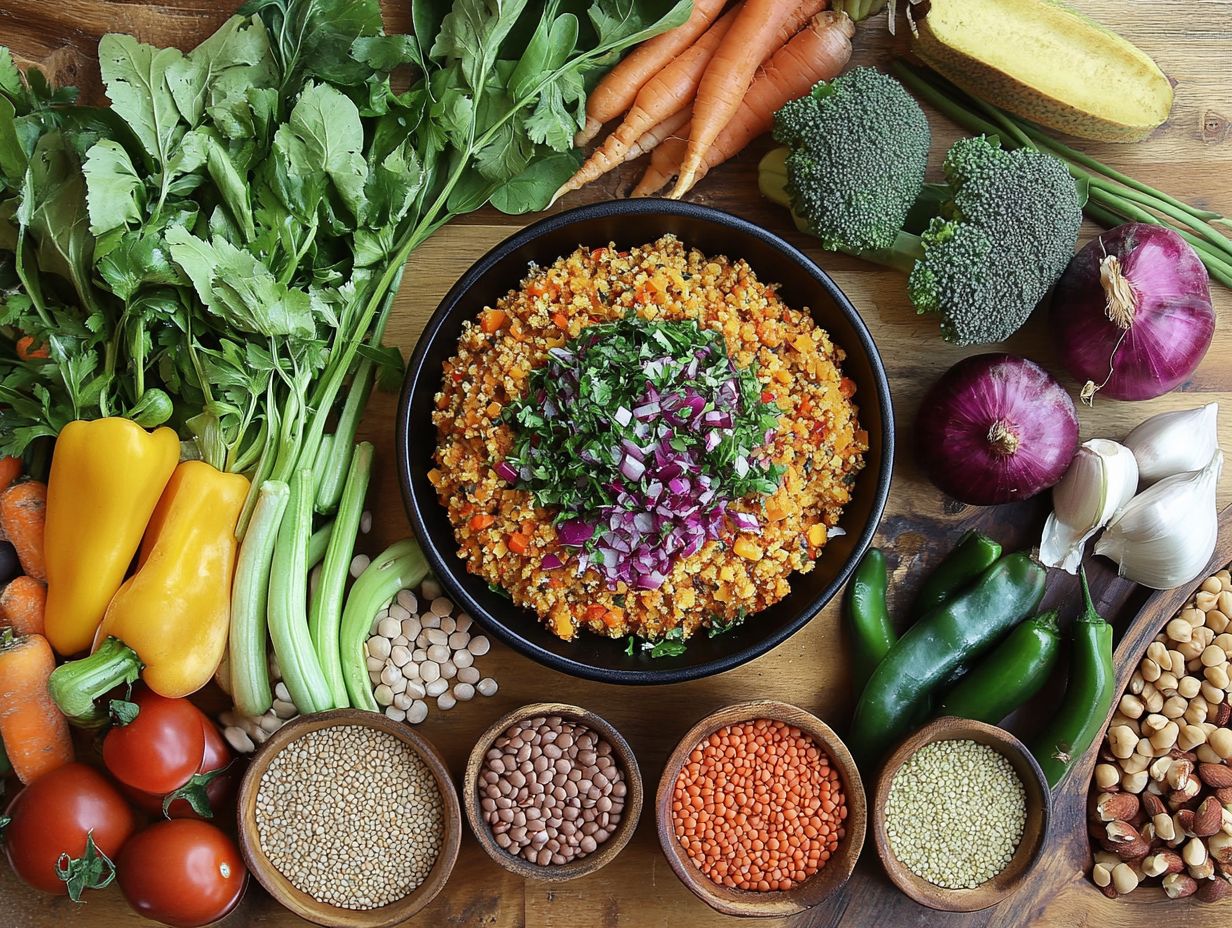
Flavorful and lectin-free plant-based meals for lunch and dinner are essential for adding variety and balance to the daily menu. Recipes such as healthy vegetable stir-fries, legume-based salads, and nutrient-dense grain bowls allow for diverse and satisfying meals that promote better health while accommodating dietary restrictions.
To emphasize the importance of these meals, consider pairing them with seasonal produce. For instance, hearty fall and winter sweet potato and quinoa bowls can be topped with fresh parsley and drizzled with a tangy avocado dressing. In contrast, a light and refreshing summer salad could feature cherry tomatoes, cucumbers, and grilled corn.
Additionally, soups and stews made with warming plant proteins like chickpeas or lentils can ensure that these meals are both nourishing and comforting. By infusing creativity into meal planning, even the most basic dishes can be elevated to new levels of culinary delight, making plant-based eating an exciting and fulfilling experience.
Snack and Dessert Recipes
Healthy snacks and desserts that are lectin-free are an excellent way to complement meals or enjoy as unrefined treats throughout the day, supporting detoxification and a wellness lifestyle.
For instance, raw energy balls made from a variety of nuts and seeds, along with a decadent vegan chocolate mousse crafted from blended avocados, are two delicious and functional examples, embodying holistic nutrition.
By incorporating wholesome ingredients such as oats, chia seeds, and dates, one can create a range of satisfying and nutritious snack recipes.
Baked oatmeal cookies sweetened with mashed overripe bananas serve as a great healthy snack or dessert option.
Alternatively, you can prepare parfaits using coconut yogurt instead of dairy yogurt, layering it with seasonal fruits and granola for a delightful dessert.
These options provide a healthy alternative to sugar-laden snacks and desserts, promoting portion control and mindful food tracking.
Tips for Incorporating Lectin-Free Vegan Meals into Your Diet
Incorporating lectin-free vegan meals into your diet can be made easier with meal planning and cooking techniques that promote sustainable eating practices and ethical eating.
Thoughtful meal planning and mindful shopping choices ensure a consistent supply of healthy ingredients for your lectin-free vegan meals, enhancing food diversity and supporting environmental impact reduction.
Additionally, learning how to substitute non-vegan or lectin-containing ingredients in recipes will help you maintain meal variety in your diet while cooking, utilizing food swaps and recipe blogs for inspiration.
Meal Planning and Shopping Tips
Here are some effective meal planning and shopping tips for those looking to adopt a lectin-free vegan diet while ensuring safe eating and budget-friendly meals, incorporating food safety practices.
Planning meals for the week can help you organize your grocery shopping, reduce food waste, and ensure access to fresh, seasonal ingredients that meet your dietary needs.
By carefully organizing meals and shopping, individuals can efficiently stretch their budgets while supporting a healthy lifestyle. Techniques such as creating a comprehensive shopping list based on your planned recipes can help avoid impulsive purchases and promote mindful eating.
Incorporating seasonal ingredients maximizes flavor and often lowers costs. Additionally, understanding how to store food properly enhances food safety and preserves the freshness of ingredients, which is essential for building a repertoire of healthy and enjoyable budget-friendly dishes.
By making informed choices at each step of the meal planning process, you can easily accommodate dietary restrictions without compromising quality or taste.
How to Make Substitutions for Non-Vegan Ingredients
Substituting non-vegan ingredients in recipes is an essential skill for those following a lectin-free vegan diet, as it encourages creativity in cooking and promotes healthy eating practices. Numerous vegan alternatives are available, ranging from dairy substitutes to nut butters, which can help create healthy, creative, and satisfying meals that align with dietary restrictions. Incorporating whole foods and plant-based diet principles can lead to better health and offer weight management benefits.
One of the most common ingredients that people substitute in vegan cooking is eggs. Flaxseed meal serves as an effective egg replacement; to use it, mix 1 tablespoon of ground flaxseed meal with 3 tablespoons of water per egg. Flaxseed not only acts as a binding agent but also provides a source of healthy omega-3 fatty acids, contributing to heart health and cholesterol management.
Other vegan egg alternatives include foods that support gut health:
- Unsweetened applesauce
- Baking powder
- Silken tofu
- Commercial egg replacers like Ener-G and Orgran
For delicious spreads, nut butters such as almond or cashew can effectively replace butter or cream cheese. Almond milk, soy milk, coconut milk, and coconut cream can substitute for milk, cream, and yogurt. Besides their creaminess, nut-based milks enhance the texture and flavor of dishes, making them ideal for smoothies, soups, and sauces. Incorporating these into vegan recipes can add nutrient-dense benefits and are part of a sustainable living approach.
Almond milk is rich in vitamin E, which supports healthy skin and hair. Soy milk is a complete protein source, providing all the essential amino acids required by the body. Coconut milk, on the other hand, is high in medium-chain triglycerides (MCTs), a type of saturated fat that is easily digested and can serve as a quick energy source.
For creamy dishes, vegetable broths or coconut cream can replace dairy. Almond milk has a mild flavor, making it suitable for soups, sauces, and desserts, while soy milk is a good choice for cooking due to its unique flavor and slightly thicker texture compared to other plant milks. Coconut milk is often used in Asian cuisines, adding a rich flavor to curries and soups.
Both almond and soy milks can be used in baking, but coconut milk is particularly well-suited for recipes like pancakes or waffles, where a richer flavor is desired. These plant protein sources align well with meal variety and ethical eating practices.
Yogurt can be substituted with coconut yogurt or almond yogurt in dressings or smoothies. Both cream and yogurt can be replaced with nut-based cream alternatives, such as cashew or almond cream, which can be whipped or blended to achieve a similar texture and flavor.
Cheese is another popular ingredient that can be easily replaced with nutritional yeast, which mimics the flavor and texture of cheese. Nutritional yeast has a nutty flavor and is an excellent source of B vitamins, including B12, which is essential for metabolic processes and the formation of red blood cells. Vegan cream cheese is widely available at health food stores and makes a great substitute for feta cheese in Greek salads, supporting a plant-based diet and providing vitamin B12 alternatives.
Nuts such as almonds, Brazil nuts, cashews, hazelnuts, macadamia nuts, pecans, pine nuts, pistachios, and walnuts are rich in omega-3 fatty acids, magnesium, potassium, and zinc, which can help boost the immune system. Olive oil, rich in monounsaturated fats that promote heart health, can be used in salad dressings and marinades. These superfoods contribute to a balanced diet and offer significant health benefits.
Vegan sour cream is also available at many health food stores and serves as an excellent substitute for regular sour cream. For those who wish to avoid eggs, vegan mayonnaise is an option, with commercial varieties offering the flavor of traditional mayonnaise without using eggs. Homemade mayonnaise can also be easily made using silken tofu or garbanzo bean flour combined with lime juice. These food swaps demonstrate culinary creativity and support a health-conscious lifestyle.
Vegan salad dressings can often be found in health food stores as well. A simple homemade salad dressing can be created by combining olive oil, balsamic vinegar, and herbs. Drizzling mixed greens with berries, citrus fruits, nuts, or seeds creates a delicious and nutritious salad.
Additionally, adding flaxseed meal and chia seeds to salads enhances their nutritional value by providing omega-3 fatty acids, protein, and fiber. These additions support digestive health and contribute to a holistic nutrition approach.

